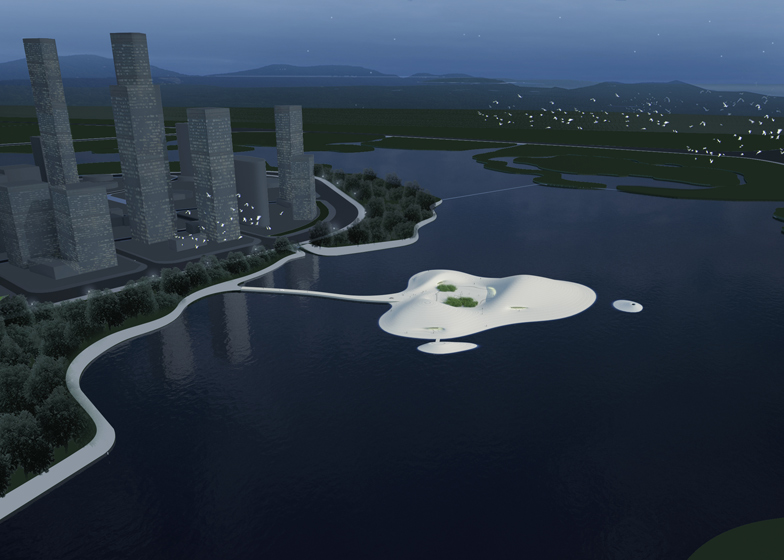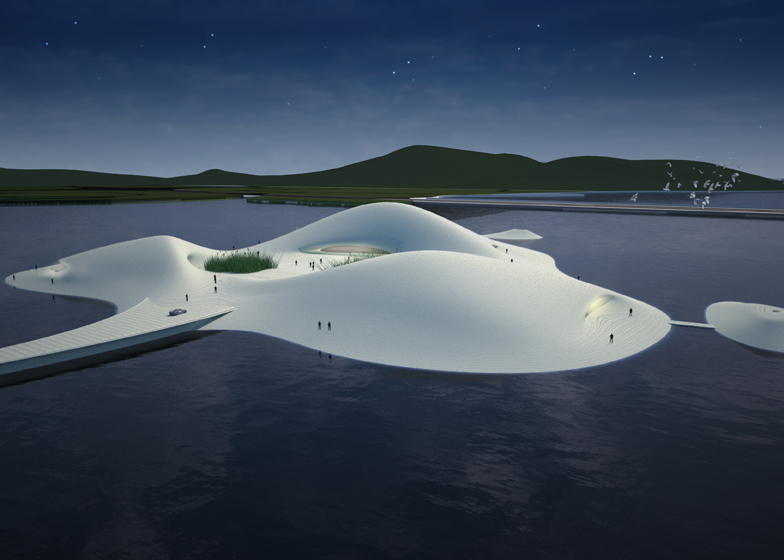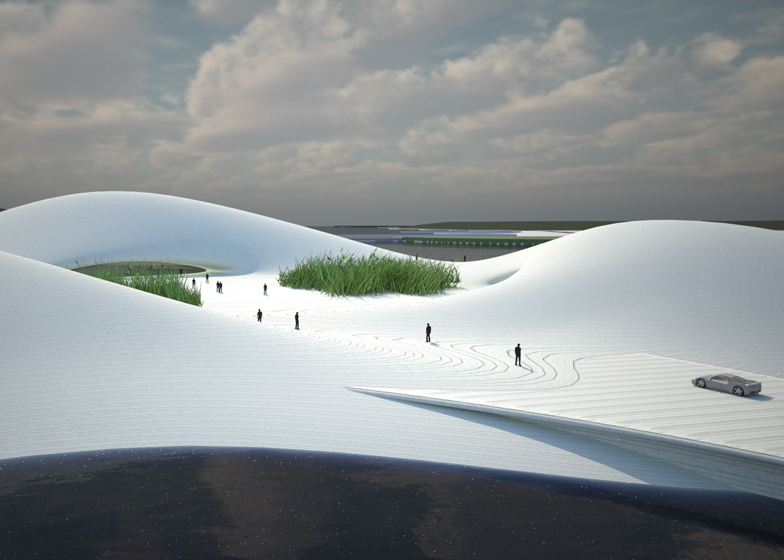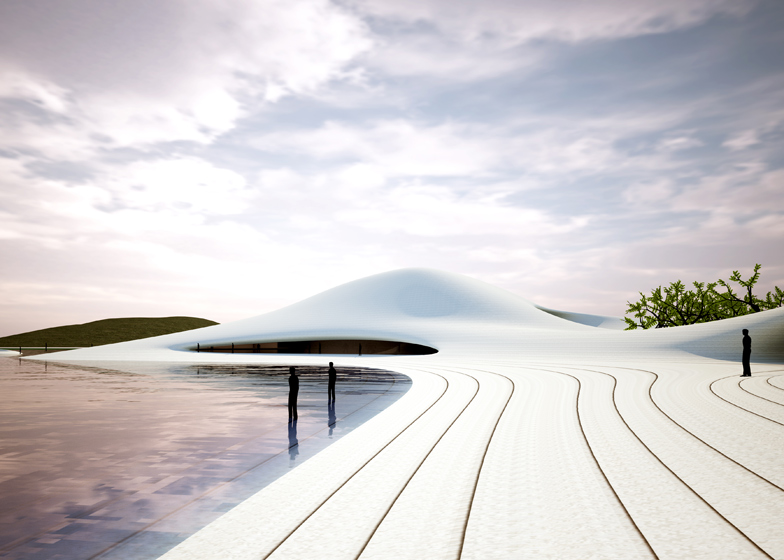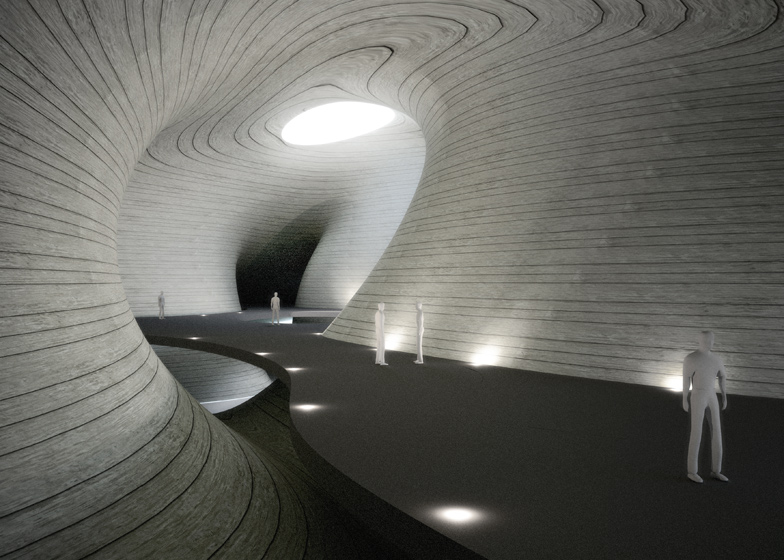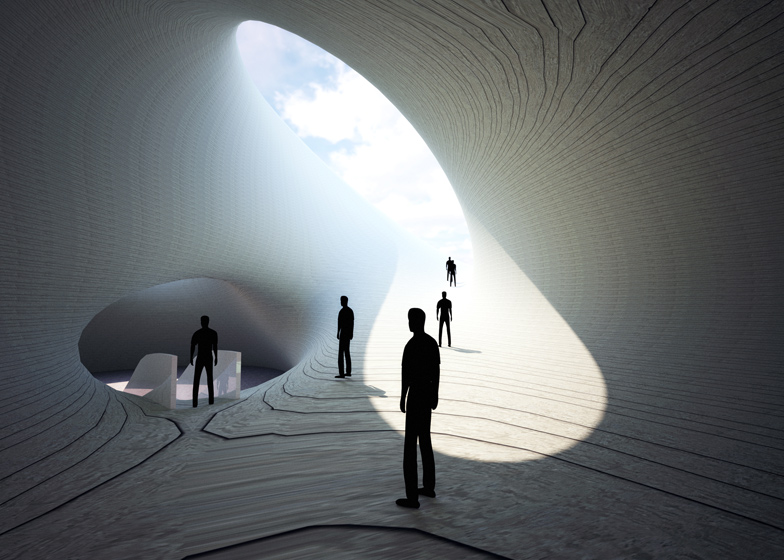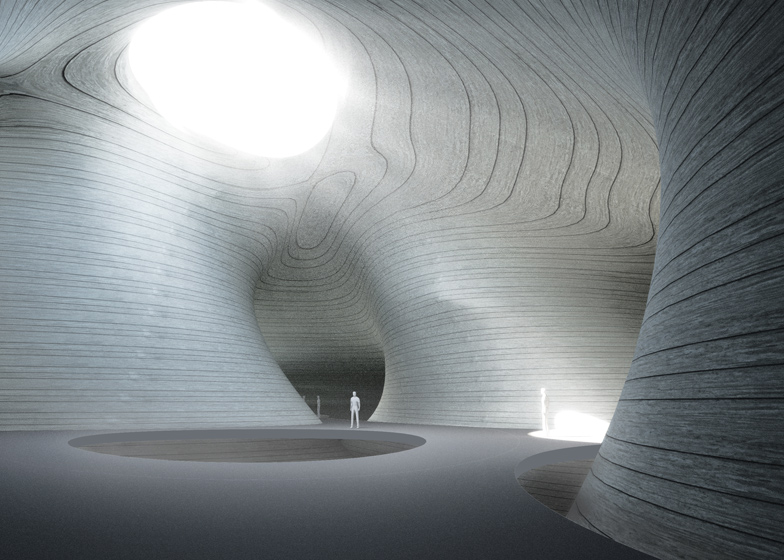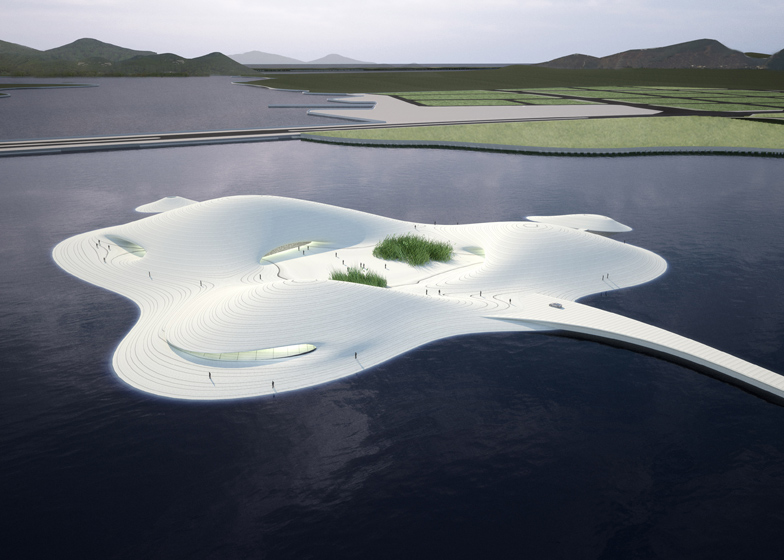Beijing architecture studio MAD has designed an artificial island with an art museum set in caves in its three dune-like forms.
Set in a reservoir on Pingtan island in China's Fujian province, the Pingtan Art Museum will be accessed via a narrow undulating bridge.
The building is designed by MAD as three concrete mounds, creating cave-like exhibition spaces inside and curved public spaces over the rooftops.
"The island is firstly a public space that is then turned into a museum," say the architects. "The sea, the beach, the oasis and the slope all interconnect with each other, forming a harmonious capacious space with the mountains in the distance."
The concrete walls will be mixed with local sand and shells to give them a rough, grainy texture.
As the largest private museum in Asia, the 40,000 square-metre structure will display a collection of over a thousand Chinese artworks and objects.
The building will also form the centre of a new city on Pingtan, which is currently in the planning stages.
Other projects underway by MAD include a village of towering apartment blocks in the mountains and a skyscraper with gardens at each level.
Completed buildings by the firm include a pair of twisted skyscrapers and an icicle-shaped museum for wooden sculptures. See more architecture by MAD »
Read on more more information from MAD:
MAD Pingtan Art Museum Begins Construction Preparation Phase
Pingtan Art Museum, the third museum design by MAD Architects, has just begun its construction preparation phase. It will be the largest private museum in Asia, claiming a construction area of over 40,000 square metres. The museum's investments total around 800 million RMB and upon completion, its debut exhibition will display over a thousand pieces of national treasures.
Being the largest island in the Fujian province, Pingtan is also the Chinese island nearest to Taiwan. In 2010, the 'Comprehensive Experimental Zone' project in Pingtan was officially launched; the island is expected to become the primary location for trade and cultural communication between Taiwan and the mainland in the foreseeable future. The island, which is currently home to fisheries and a military base, will quickly be transformed into an large-scale urban development zone.
This new city, which is still under planning, will hold the museum at its centre. The museum itself acts as a smaller scale island off the Pingtan Island itself, connected to land only by a slightly undulating pier, which, in turn, bridges artificial and natural, city and culture, as well as history and future. The museum represents a long-lasting earthscape in water and is a symbol of the island in ancient times, with each island containing a mountain beneath it.
The island is firstly a public space that is then turned into a museum. The sea, the beach, the oasis and the slope all interconnect with each other, forming a harmonious capacious space with the mountains in the distance. The building is constructed with concrete that is blended with local sand shells. The indoor space, formed by the rise and fall of the formal movements, looks similar to ancient caves.
Pingtan Art Museum is built in a landscape setting of an urban city. After its completion, it will create a new space for the city and the city's inhabitants and further inspire them to reflect on the impact made by time and nature.
Location: Pingtan, China
Program: Museum
Site Area: 32,000 sqm
Building Area: 40,000 sqm
Director in Charge: Ma Yansong, Dang Qun, Yosuke Hayano
Design Team: Zhao Wei, Huang Wei, Liu Jiansheng, Jei Kim, Li Jian, Li Guangchong, Alexandre Sadeghi

